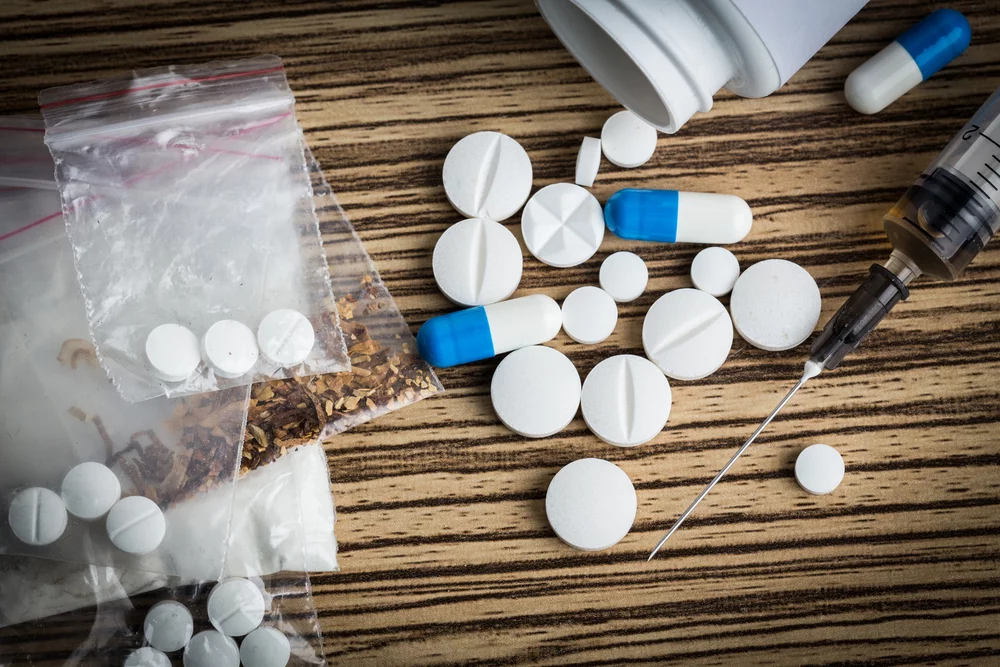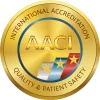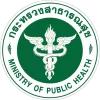As prescriptions for painkillers have increased over the last two decades, rates of addiction have skyrocketed, with millions worldwide being affected by painkiller dependence. Knowing the risks and signs of painkiller addiction, along with what is needed in order to treat it, is critical in saving lives.
If you are worried that you may have formed a painkiller addiction, you’re not alone. In the United States alone, it’s estimated that three million people have or are in recovery from a painkiller addiction. Though opioids are the most common source of painkiller dependence, other pain medications like ketamine, pregabalin and barbiturates can also be addictive.
Recognising that you are addicted to pain medicine is a critical first step in seeking help. Though painkiller dependence is an extremely serious disorder, there are many options for treatment that can help you regain control of your life and your health. This comprehensive guide offers insights into how painkiller addiction develops, as well as reviews options for treatment. Remember, addiction is a medical disorder that requires professional help in order to best address and manage it. Reaching out for support allows you to connect with the resources you need to heal and thrive.
What are Prescription Painkillers?
Prescription painkillers are a type of medication used to relieve moderate to severe pain. This can be short-term pain related to a surgery or minor injury, or chronic pain from a major injury or illness such as cancer. Some of the most addictive painkillers today are drugs known as opioids, synthetic or semi-synthetic substances derived from the naturally-occurring opium plant. These include medicines like fentanyl, hydrocodone, oxycodone, tramadol and Oxycontin. A few medications, like morphine and codeine, are opiates, which means they are derived directly from the opium plant.
However, not all painkillers are opiates or opioids. Medications used for neuropathy, or nerve pain, belong to other classes of medication, but may also be addictive. These include drugs such as Gabapentin and Pregabalin (Lyrica). Barbiturates are another type of potentially addictive medication sometimes used for pain relief and as a relaxant, and include medicines like Phenobarbital and Butalbital. Ketamine, a surgical anesthetic, is another painkiller now being used as an alternative to opioid-based medications, but also has an addictive potential.
Why are painkillers addictive?
Opioid and opiate painkillers have a particularly high potential for addiction because of the unusually powerful way they interact with the brain’s reward centre. Opioids stimulate a flood of endorphins, a feel-good neurotransmitter that promotes a sense of relaxation and wellbeing, and relieves the sensation of pain. When the drug wears off, people may be left with a sense of needing more of those effects, and experience cravings.
Non-opioid painkillers with addictive potential have the same risk for dependency due to similar interactions with the brain’s reward centre. Over time, continued use of painkillers builds a tolerance, meaning the brain needs more of the drug in order to achieve the same desired effect. This can lead to people misusing painkillers by increasing their dosage or the frequency of doses taken, which dramatically increases the risk for addiction.
How do you prevent painkiller addiction?
Not everyone who uses painkillers will become addicted. Many people are able to take painkillers without issue, and the risk of addiction is lower when painkillers are only prescribed for a short time and are used exactly as instructed. This includes good practices like:
- Only taking painkillers under a doctor’s supervision, and according to a doctor’s specific instructions
- Taking painkillers for as short a period as possible
- Incorporating other medications or methods for pain relief
- Not sharing medications with others
- Not relying on painkillers to cope with stress or hardship
However, even when following these guidelines for proper use, it is important to understand the risks for addiction, and how an individual’s personal history may lead to an increased potential for painkiller dependence.
How Can You Tell if Someone Is Addicted to Painkillers?
Painkiller addiction is a complex disorder that involves compulsive, habitual use of painkillers despite negative consequences to one’s health and wellbeing. Painkiller addiction affects both the mind and body, and can have serious and even fatal consequences. Symptoms of painkiller addiction include things like:
- Misusing painkillers by taking them at a higher dose, greater frequency, or longer length of time than prescribed
- Having strong cravings for painkillers
- Needing greater amounts of the drug in order to feel the same effect
- Loss of interest in previously enjoyed activities
- Spending increasing amounts of time finding, using, or coming down from painkillers
- Using painkillers despite ill-effects to mental or physical health, or other personal or financial consequences
- Trying to cut down or change use but being unable to due to cravings or physical withdrawal
Addiction is different from dependency, which is another type of physiological response to painkillers. A painkiller dependence is physical, and can occur without the other signs of painkiller addiction. With opioids, a physical dependence can form in as little as five days. Therefore, in order to safely and comfortably finish a course of medication, doctors will gradually reduce the amount of medicine taken as opposed to immediately stopping it. This process gives the body time to wean itself off of the drug and reduce uncomfortable withdrawal symptoms.
How do people get addicted to pain pills?
The speed at which a physical dependency can form from opioids can also influence addiction potential, with just five days of opioid use sharply increasing the likelihood of long-term misuse. If you are finding yourself misusing painkillers by adjusting your own dosage by taking more pain medication than prescribed, increasing the frequency of your doses, or seeking medication outside your doctor’s supervision, these are warning signs that you may have an addiction to painkillers.
Why Do People Get Addicted to Painkillers: Risk Factors for Painkiller Addiction
As for any type of addiction, a number of environmental, familial and genetic factors can increase the risk for developing an addiction. These factors can include things like:
- Family or personal history of addiction
- High levels of stress about employment, finances or relationships
- History of mental health disorders like depression, anxiety, or post-traumatic stress disorder
- Exposure to trauma or abuse, including that sustained in childhood
- Tendency towards high-risk or thrill-seeking behaviours
- Chronic pain
Women are also more likely to develop a painkiller addiction, particularly to opioids, for several reasons. Women are more likely than men to experience long-term or chronic pain, and are more likely to be prescribed painkillers at higher dosages and for longer periods than men, leading to a greater risk of dependency.
What are the Effects of Painkiller Addiction on Health?
Because of the significant ways that painkillers interact with the brain and body, chronic misuse and addiction can lead to serious consequences for both physical and mental health. Opioid painkillers in particular have immediate effects on several key body function areas, including:
- The brain stem – opioids depress the brain stem, affecting essential functions controlled by it like metabolism and breathing
- The spinal cord – the interaction of opioids with the spinal cord is thought to help with pain management
- The limbic system – opioids also affect this system by promoting feelings of relaxation and pleasure
Over a short period of time, painkiller interactions with these systems result health effects like:
- Constipation
- Nausea or vomiting
- Confusion
- Euphoria
- Difficulty making decisions or focusing
- Reduced reaction time
- Reduced awareness
- Fatigue, drowsiness (“nodding off”)
- Loss of consciousness
If painkillers are misused for a long period of time, serious and potentially permanent damage can occur. Because many painkillers can cause slowed breathing, especially in increased dosages, this can limit oxygen to the brain and possibly inflict permanent damage. Other possible long-term health effects of painkiller use include:
- Addiction
- Sleep disturbances, including sleep apnea
- Depression
- Hallucinations or psychosis
- Suicidal ideation
- Lessened ability to feel joy or pleasure
- Reduced reaction time
- Reduced awareness
- Fatigue, drowsiness (“nodding off”)
- Loss of consciousness
Additionally, women who are taking painkillers while pregnant or breast-feeding may also unintentionally expose a fetus or infant to side effects of these medications, including a physical dependency. It’s critically important for women in these situations to consult with their doctor before taking any pain medication.
What Happens If You Overdose on Painkillers?
A painkiller overdose is an extremely serious medical situation that necessitates immediate medical intervention to prevent death. Opioids are particularly lethal, but fatal overdoses may also occur when taking other types of painkillers. The risk of overdose increases when painkillers are mixed with other medications or substances like alcohol, so being aware of potential drug interactions is critical in preventing serious ill-effects. Talk to your doctor about what medications or substances you may need to avoid while taking painkillers.
Painkiller overdose symptoms include:
- Slow, shallow breathing
- Small, “pinpoint” pupils
- Inability to stay awake, unconsciousness
- Limp body, fatigue
- Cold or clammy skin
- Choking or gurgling
- Blue-coloured lips or fingernails
What to do in case of an overdose
In case of a suspected overdose, you should immediately call an ambulance. If you believe the overdose was caused by an opioid painkiller, administer naloxone if it is readily available. Naloxone is a fast-acting nasal spray that blocks the effects of opioids. It is easy to use, and administering naloxone does not require medical training.
If naloxone is not immediately available, or if the overdose was caused by a non-opioid painkiller, try to keep the person awake and talking. If they are unconscious, roll them onto their side to prevent choking, and stay with them until emergency help arrives.
Treatment Options for Painkiller Addiction
The increase of people seeking treatment for painkiller addiction has driven a push towards innovations in treatment, with most modern painkiller addiction treatment plans incorporating a holistic approach that focuses on healing both the mind and body. Due to the nature of physical dependency caused by painkiller use, particularly for people addicted to opiates or opioids, all treatment must begin with a medically-assisted detox process to safely wean the patient off of the drug.
Detox: The first step of recovery
Painkillers require medically-supervised detox in order to safely treat physical dependency before beginning to address the other aspects of the addiction. Stopping these drugs can cause severe symptoms of withdrawal that may require immediate medical intervention. These symptoms can include:
- Nausea, vomiting, diarrhea
- Tremors
- Anxiety, panic attacks
- Headaches
- Heart palpitations
- Seizures
- Muscle aches
- Sweating
- Mood swings
- Agitation
- Sleep disturbances
- Chills
- Depression
- Drug craving
Contacting a doctor or an addiction specialist is an important first step in creating a safe, medically-supported detox plan to make you as comfortable as possible during this initial stage of recovery.
Cognitive behavioural therapy (CBT)
Cognitive behavioural therapy, or CBT, is an effective and widely-practiced method of therapy often used for those looking to overcome addiction to painkillers or other drugs. CBT identifies the root causes of addiction, explores problematic patterns of thought and behaviour, and elicits ways in which to constructively address and shift these patterns. As part of this method, clients and therapists also discuss and practice alternative, healthy coping mechanisms for managing stress and dealing with challenging situations to improve resilience and lower the risk of relapse.
Group therapy
Group therapy offers a unique and affirming experience to those in recovery. Surrounded by people with similar challenges and life experiences, participants benefit from informed support, knowledge, and advice from their peers and a skilled, compassionate facilitator. This also allows participants a glimpse into different stages of recovery, helping to broaden a sense of what life outside of painkiller addiction is like.
Medication assisted-treatment
Depending on the needs of the patient, an addiction specialist may recommend the use of medications to supplement other forms of treatment for people who are addicted to painkillers. Medications commonly used to treat those with an addiction to opioid painkillers include buprenorphine, methadone, and naltrexone. These medications should be used only in combination with other therapies, such as CBT, in order to successfully treat all aspects of the addiction.
Wellness practices
From yoga to jogging to mindfulness meditation, wellness practices help to strengthen the body and provide a healthy outlet for stress and tension. As those in recovery seek to expand their coping mechanisms past substance dependency, engaging in different types of wellness practices helps to find new ways of relaxation and natural methods of boosting mood.
Overcoming Painkiller Addiction at The Dawn Rehab Thailand

The Dawn Wellness Centre and Rehab is a uniquely designed rehabilitation and wellness facility created to foster an environment of personal growth and healing for people who want to change their lives and overcome addiction or mental health issues. Located in beautiful Northern Thailand, The Dawn is internationally accredited by the American Accreditation Commission International, and nationally licensed by the Thai Ministry of Health.
The Dawn’s Healing Approach
The fundamental objective of The Dawn’s painkiller addiction programme is for clients to achieve and maintain long-term recovery by equipping each individual with a personalised and diverse set of coping tools to use when dealing with life’s challenges, extinguishing the desire to use again. Our internationally-trained team of experts have years of experience successfully supporting clients through every step of the recovery process, from medically-supervised detox to aftercare support.
Call us today to learn more about we can help you achieve a safe and sustainable recovery from painkiller addiction.
Related Posts
 Painkiller: Netflix Takes on the Story Behind the Opioid Epidemic
When Oxycontin burst on the scene as the newest innovation in pain management, many doctors were led to believe that this was a safer, effective alternative to other opioids. Netflix’s...
Painkiller: Netflix Takes on the Story Behind the Opioid Epidemic
When Oxycontin burst on the scene as the newest innovation in pain management, many doctors were led to believe that this was a safer, effective alternative to other opioids. Netflix’s...
 Opioid Addiction and Chronic Pain: Understanding the Risks and Alternatives
For years, opioids have been at the forefront of treating pain. However, the effectiveness of opioids over a long period is being debated, particularly given the high risk for addiction....
Opioid Addiction and Chronic Pain: Understanding the Risks and Alternatives
For years, opioids have been at the forefront of treating pain. However, the effectiveness of opioids over a long period is being debated, particularly given the high risk for addiction....
 What You Need to Know About Opioid Withdrawal Symptoms, Detox and Treatment
Opioid addiction is becoming a global problem and is currently the primary cause of drug overdose in the U.S. Opioids such as morphine and codeine are synthetic drugs that cause the...
What You Need to Know About Opioid Withdrawal Symptoms, Detox and Treatment
Opioid addiction is becoming a global problem and is currently the primary cause of drug overdose in the U.S. Opioids such as morphine and codeine are synthetic drugs that cause the...
 Guide to Addiction & Mental Health in Australia
Australia, as with many other countries, isn’t alone in facing a growing problem with addiction and mental health-related issues. Dealing with this growing crisis and the complexities of addiction and...
Guide to Addiction & Mental Health in Australia
Australia, as with many other countries, isn’t alone in facing a growing problem with addiction and mental health-related issues. Dealing with this growing crisis and the complexities of addiction and...





